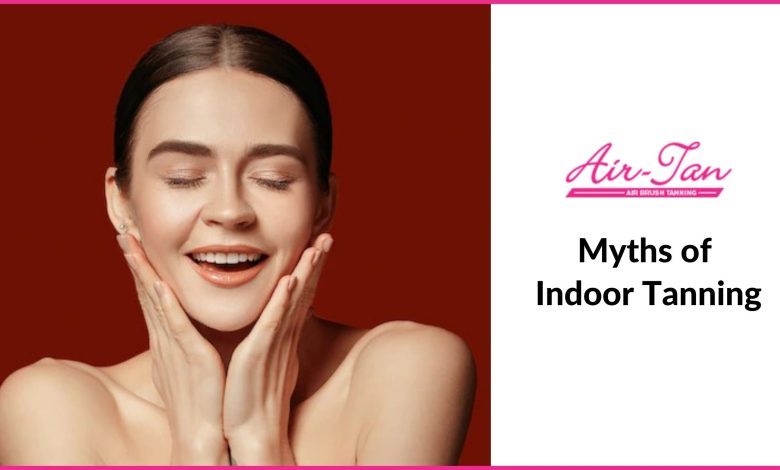
We all know the harmful effects of tanning, whether it’s in a tanning bed or under the sun. But what about indoor tanning? Indoor tanning is a term used to describe the process in which ultraviolet light is emitted into the skin, creating the appearance of being tanned.
The tanning industry is a multi-billion dollar business, so it’s no surprise that they have been convincing people to get the perfect summer tan by way of indoor tanning. The question is, are they right?
Tanning salons and the promotion of indoor tanning have increased in recent years, making it a common practice for people worldwide.
Before you decide on your opinion of indoor tanning, you should first understand the myths associated with it. This way, you are better prepared to see if tanning indoors is truly as harmful as its critics claim.
Busted out Myths of Indoor Tanning
Myth 1: Tanning has the same effect on your skin as having a healthy glow
Truth: There is no substitute for healthy skin. You cannot tan your skin safely or effectively, as it still causes damage to your skin cells.
It only increases the risk of skin cancer, premature aging, and other skin problems. The only thing that can give you a healthy glow is taking care of your skin by protecting it from the sun. You can use UV-free tanning products such as lotions and sprays, but they only give the appearance of a tan. In that, you need to know how tanning lotions work.
Myth 2: Tanning indoors is less harmful than tanning under the sun
Truth: Indoor tanning is just as harmful, if not more so. The ultraviolet light emitted by the machines in tanning salons is equally dangerous as the sun’s ultraviolet light.
It is true that tanning under the sun only emits UVB rays, which are more harmful than UVA rays, but both are equally dangerous. UVB rays cause reddening and sunburn, while UVA rays can penetrate deep into the dermis.
It causes massive damage to skin cells and increases the risk of melanoma by changing the DNA in your skin cells.
Myth 3: Tanning indoors protects you from sunburn
Truth: Tanning indoors only increases your risk of sunburn and skin cancer, premature aging, and other skin problems. Not only that, but tanning indoors without proper protection increases the risk of these harmful effects.
Spray tanning does not offer protection from the sun, as it only tans your skin temporarily. If you are going to tan indoors, make sure to wear protective clothing and always apply sunscreen before exposing yourself to the UV rays.
Myth 4: Tanning indoors is safe when performed by professionals
Truth: Just like outdoor tanning, indoor tanning should never be performed by anyone without the proper training and education.
Based on scientific evidence, tanning salons should be dedicated to giving people a healthy-looking tan. They should not be focused on making their customers feel good about themselves but rather show that the practice is pointless and harmful. And airbrush tanning is preferred among professionals, as the tan doesn’t look fake and is quite safe for the skin.
Myth 5: Indoor tanning is the only safe and effective way to get a tan
Truth: The UV light emitted by tanning beds is just as dangerous, if not more so, than the sun’s UV light. Going to the beach or spending time in natural sunlight is much safer and healthier than tanning indoors.
However, you can get a tan by using UV-free and organic spray tans lotions, and sprays that provide a golden glow without damaging your skin cells. These products give the appearance of a tan without the harmful effects that are associated with tanning indoors.
Myth 7: Tanning indoors has no side effects
Truth: Indoor tanning causes damage to skin cells and increases the risk of melanoma, premature aging, and other skin diseases.
These harmful effects are caused by the UV light emitted by tanning beds or booths, which is just as dangerous or even more dangerous than the sun’s UV light.
Side effects include sunburn, wrinkles, age spots, and, most importantly, skin cancer. These physical changes to the body are only one part of the true side effects of tanning indoors.
Conclusion
Indoor tanning is a needless process that only increases the risk of skin cancer, premature aging, and other skin problems. The only way to achieve a healthy-looking tan is with the use of UV-free, organic spray tans, and lotions. Tanning salons should use these products as well as encourage their customers to stay out of tanning beds and booths. The myth of indoor tanning has been debunked, so join the movement and stay safe in the sun. It is important to remember that anything in excess is bad for your health, even something as simple as tanning.





